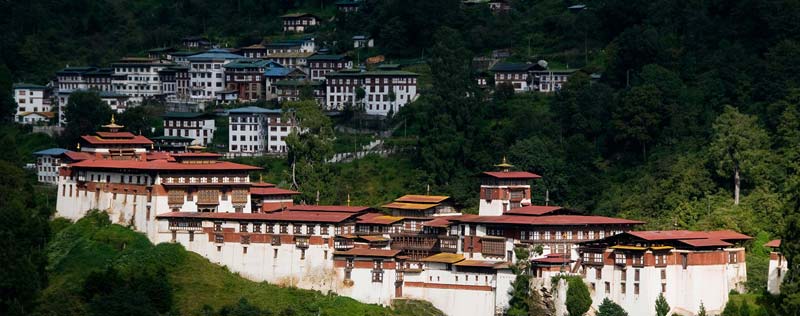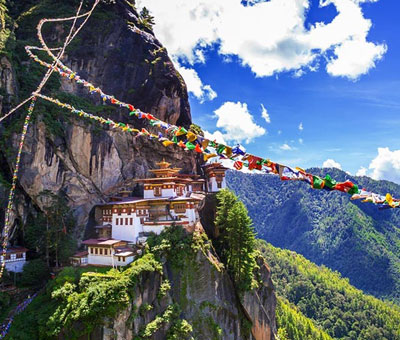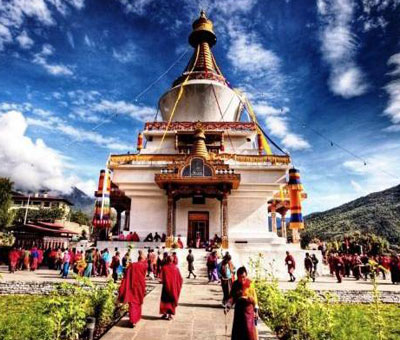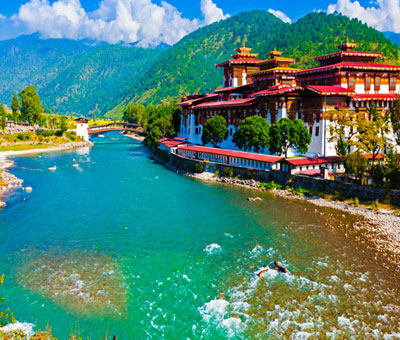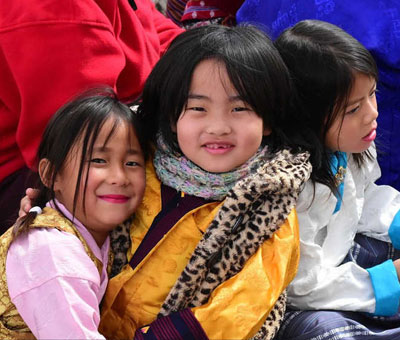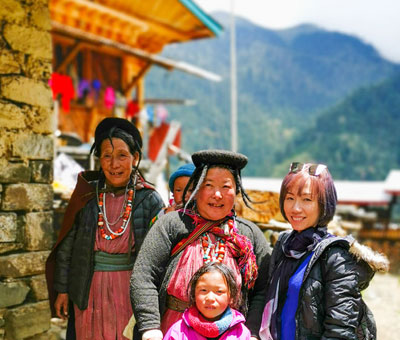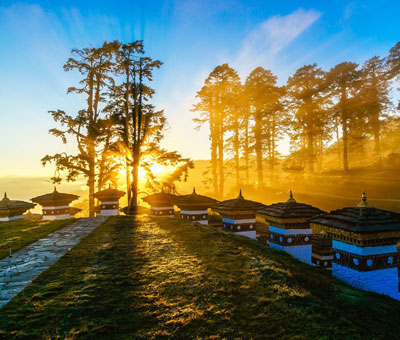Trongsa Bhutan
After passing the Nikka Chhu, the road follows the river into the Trongsa district, first leading you into the small, scenic village of Chendebji. The Chendebji Chorten, a large, whitewashed structure, sits beside a stream. Built in the 19th century by Lama Shida, the chorten was designed in traditional Nepalese style, with all-knowing eyes painted in each cardinal direction. A carved band of Buddhas wraps around its midsection. Nearby, an enormous mani wall, made of stones carved with the Buddhist mantra “om maani padme hum,” protects the village with its inscribed prayers and images of Buddha.
On the east side of the trail sits a Bhutanese-style chorten, built in 1982, by Her Majesty the Queen Mother.
Bhutan Tour Packages
Pricing and Itinerary
Trongsa is a four-hour drive from Wangdue Phodrang and a welcome rest to travelers. Built at the traditional key vantage point, the Trongsa Dzong sits imperiously above the valley and the neighboring country-side. From a vantage point on the opposite side of the valley, across the river, there is a clear view of the entire enormous dzong. The view is simply spectacular, as the road drops down into a steep gorge and then slowly climbs up to the commanding fortress, which towers over the nearby homes and buildings. Once you see the dzong, it is another 14 km (9 mi) around the side of the valley to the town. The approach that circles the valley clings to the sides of the mountains, while just past its edge are sheer drops straight down to the river. All the way into town you have great views of the dzong.
Trongsa is the ancestral home to the Royal family. Both His Majesty King Ugyen Wangchuck, the Penlop of Trongsa, who was the country’s first hereditary monarch, and his successor, King Jigme Wangchuck, ruled from the dzong here. Traditionally, the Crown Prince of Bhutan becomes the Penlop of Trongsa before ascending the throne.
Trongsa is a charming town, comprised of traditional wooden houses lined up in a row, perched on the side of a hill. Many local women weave traditional textiles from hand-dyed wool and can often be observed practicing their craft at the looms in their shops. Trongsa is also a great place to buy carpets, since the prices in shops here are more reasonable than those in Thimphu.
Situated on a bluff, overlooking the steep Mangde Chhu River Valley, is the impregnable fortress of the Trongsa Dzong, the most impressive thong in Bhutan. Ta Dzong, the watchtower that once guarded the thong, stands just above it on a hill. The dzong itself is a maze of 23 temples, corridors, beautiful stone courtyards, and administrative offices.
The dzong was built in 1647 under the orders of Shabdrung Ngawang Namgyal. The Shabdrung also appointed Chhogyal Minjur Tenpa as the first Penlop of Trongsa. Gradually, the dzong was expanded, and in 1652 the Ta Dzong was built.
The dzong was enlarged on several occasions. Tshokey Dorji, the Pen-lop of Trongsa in the latter half of the 19th century, restored the dzong and built the dukhor lhakhang, a ceremonial room. Later, Penlop Jigme Namgyal, the father of Bhutan’s first king, made further improvements to the structure. His son, King Ugyen Wangchuck, ordered the design of most of the existing decoration, including a large statue of Buddha of the Future that was erected in the beginning of the 20th century. In the entrance to the main hall, there is a painting of Zangtopelri, the heaven of Guru Rimpoche. Also in the main hall is 17th-century mural depicting Swayambunath, in Nepal.
For more information on Bhutan tour packages and on Trongsa Bhutan contact Swan Tours one of the leading travel agents in India.
